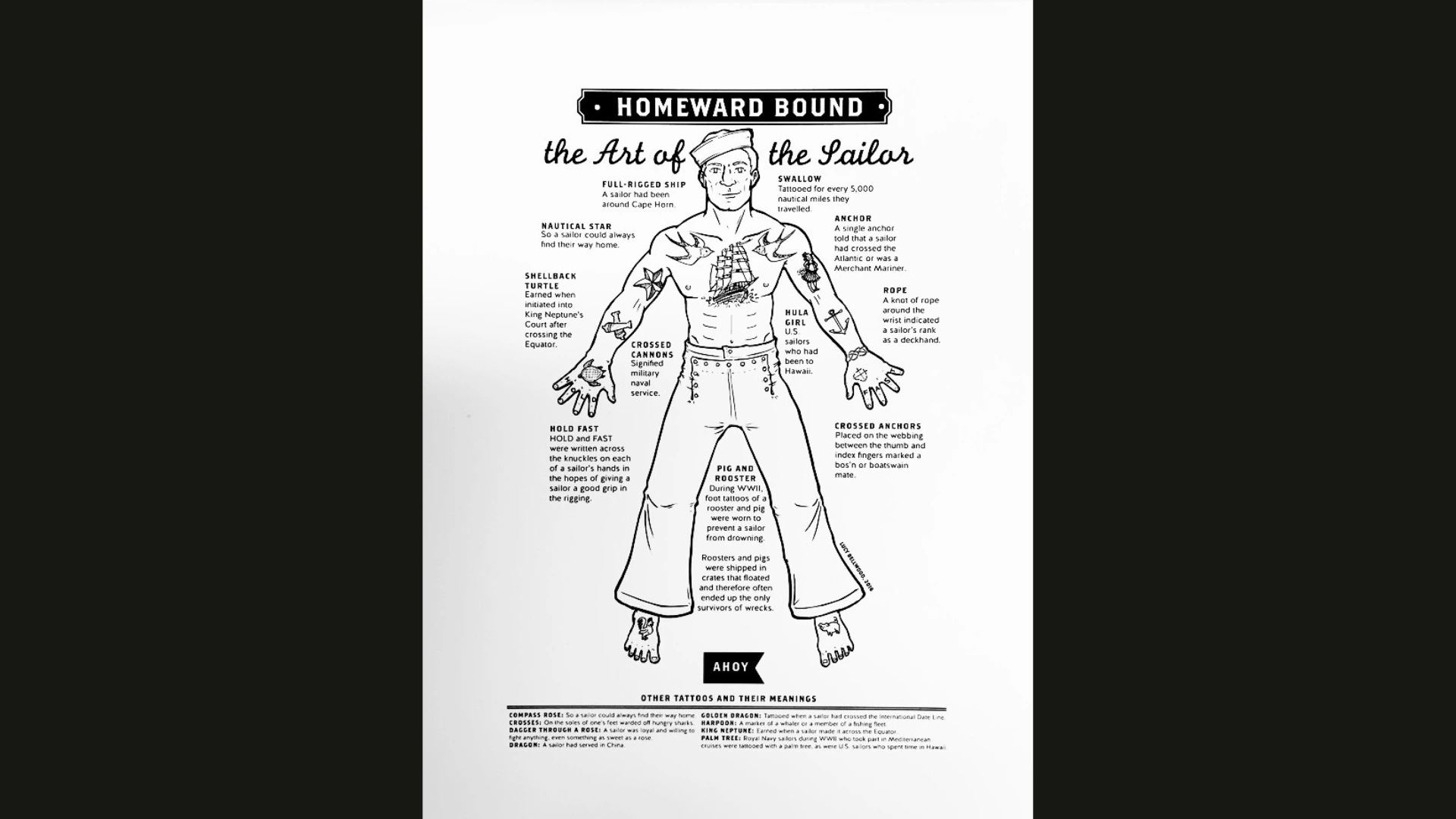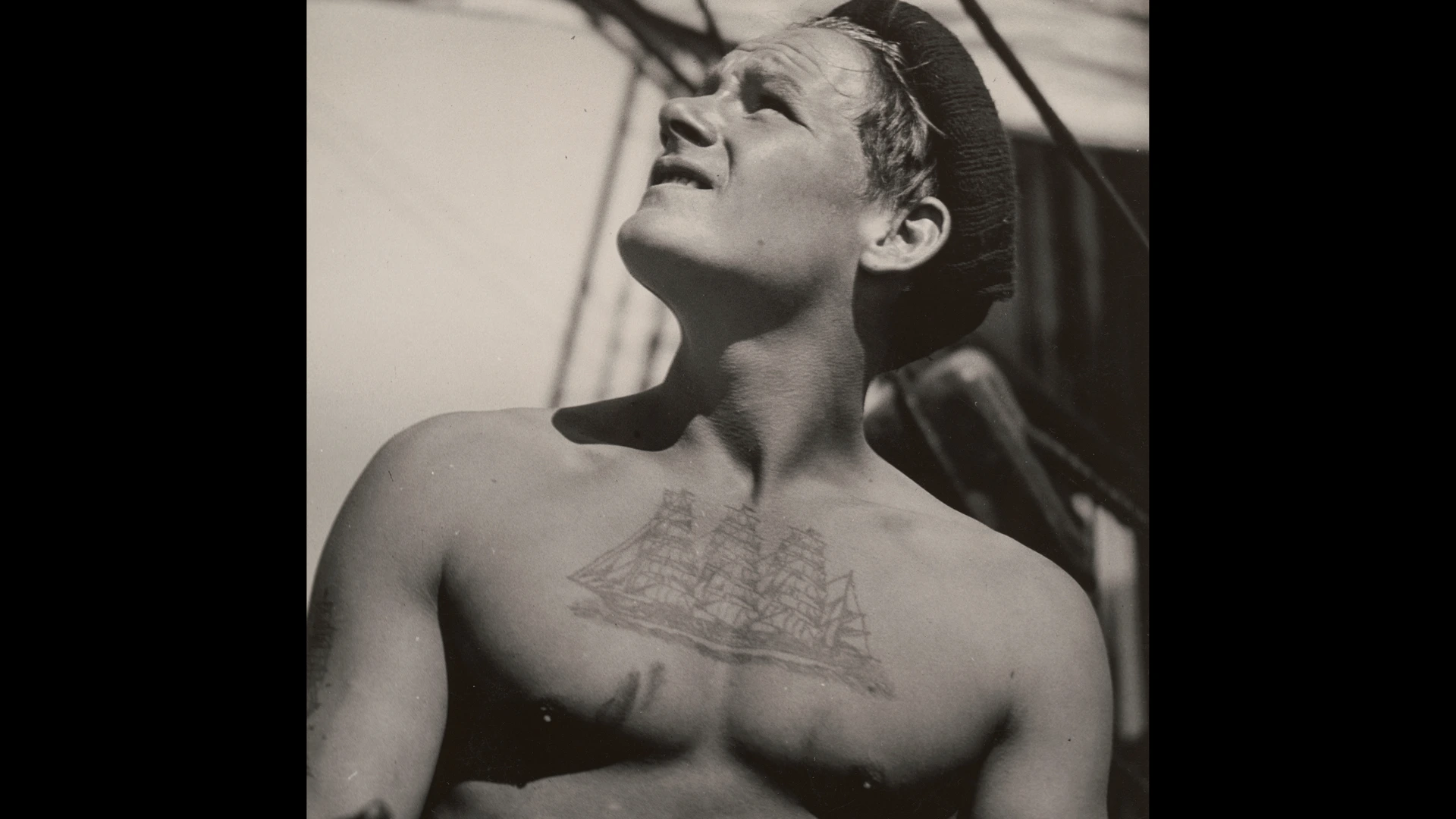Tattoo has been associated with seafarers at all levels of a ship’s hierarchy ever since Britain’s fleet began to encounter, and sometimes pillage, non-European cultures; the Yorkshire-born privateer Martin Frobisher in 1577, during his voyage on Gabriel searching for a north-west passage to China, took a tattooed Inuit woman hostage and back to England, where for the month before her death she was viewed at the court of Elizabeth I. By the eighteenth century, the sight of indelible body marking was not then novel in Europe, but the art practised since Neolithic times received a boost as Pacific exploration accelerated in the later part of that century.
Lieutenant James Cook and his crew observed and recorded Polynesian tattooing on their first Pacific voyage in HMS Endeavour (1768–1771): the naturalist Joseph Banks wrote an account of a girl being tattooed in Tahiti, and the artist Sydney Parkinson drew tattoos he came across in Tōtaiete mā the Society Islands as well as in Aotearoa. Both the scientific gentlemen were taken enough with the practice to have themselves modified, as did many ordinary Endeavour seamen. ‘Both sexes paint their Bodys, Tattow, as it is called in their Language. This is done by inlaying the Colour of Black under their skins, in such a manner as to be indelible,’ Cook wrote while at anchor in Tahiti in 1769. The term tattoo soon entered the European lexicon, and the entwining of tattoos with nautical culture only increased when Mai (called Omai by the English) from Ra‘iātea in Tōtaiete mā, travelled to England in 1774 on HMS Adventure and briefly achieved stardom: paraded by Banks, presented to George III, and painted—tattooed hands and all—by Joshua Reynolds, living evidence of Cook’s second South Seas expedition.
Bellwood is a tall-ship sailor as well as a cartoonist. Her first book, Baggywrinkles: A Lubber’s Guide to Life at Sea, was based on time spent as a deck hand on the replica eighteenth-century brig Lady Washington as it sailed the west coast of North America. She then wrote and drew Mappin’ the Floor: A Scientific High-Seas Adventure as the artist-in-residence on the oceanographic research vessel Falkor in 2016 as it bounced sound waves off the bed of Te Moana-nui-a-Kiwa.
Excerpted from Endless Sea, Stories told through the taonga of the New Zealand Maritime Museum Hui te Ananui a Tangaroa. Written by Frances Walsh. Photographed by Jane Ussher. Massey University Press, 2020
References:
Aitken-Smith, Trent. The Tattoo Dictionary. Mitchell Beazley, 2016
“Homeward Bound: the Art of the Sailor” by Lucy Bellwood; typographic layout by Skipp Design, 2013. NZMM 2019.31.1
Mallon, S. & Galliot, S. A History of Sāmoan Tattooing. Te Papa Press, 2018
Pickthall, Barry. A History of Sailing in 100 Objects. Bloomsbury, 2016
For more stories about the ways of seafarers hurry to the museum’s exhibition Captains, Collectors, Friends & Adventurers, closing end of June 2023.

